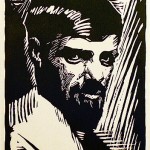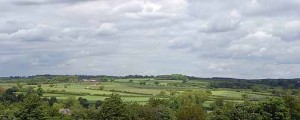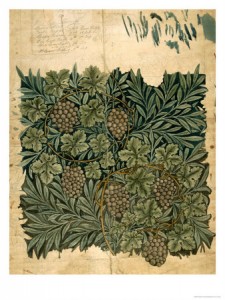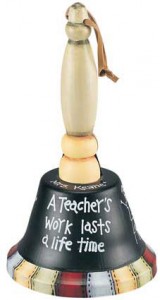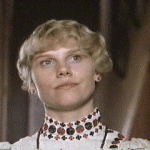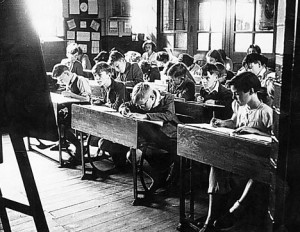The English are so nice D.H.Lawrence
The English are so nice
so awfully nice
they’re the nicest people in the world.
And what’s more, they’re very nice about being nice
about your being nice as well!
If you’re not nice, they soon make you feel it.
Americans and French and Germans and so on
they’re all very well
but they’re not really nice, you know
They’re not as nice in our sense of the word are they now?
That’s why one doesn’t have to take them seriously.
We must be nice to them, of course,
of course, naturally
But it doesn’t really matter what you say to them,
they don’t really understand
you can just say anything to them:
be nice, you know, just be nice
but you must never take them seriously, they wouldn’t understand
just be nice, you know! oh, fairly nice,
not too nice of course, they take advantage
but nice enough, just nice enough
to let them feel they’re not quite as nice as they might be.
The sharp observations of a man who spent the majority of his adult life outside the country of his birth and occasionally commented on it from afar.
80 years ago today, the English writer D.H. Lawrence died in Vence in the south of France. He grew up in Nottinghamshire, trained as a teacher, but then left his industrialised East Midland roots to travel the world. Not unlike James Joyce, he too left for the continent of Europe with the new love of his life but 8 years later than Joyce in 1912. His first stop was Bavaria, a place I worked in as a language assistant at the age of 18 and where I first experienced the classroom in the role of a teacher.
Lawrence was on his way further south though, to the sights and smells of sunlit Italy. He had left behind the daily routines of classroom life in Croydon, London, but it is that classroom life that I’d like to investigate, remember and commemorate in this blog post and the perceptive way in which he described it in his novel “The Rainbow” and in his two poems; “Last Lesson in the Afternoon” and “Best of School.”
The use of the rainbow, as a symbol, has a long tradition. It is displayed in many cultures around the world as a sign of diversity and inclusiveness, of hope for a better world and of yearning.
In the bible it heralded the end of the flood and hope for the future, in the gay community and beyond it is a symbol of freedom and acceptance and in politics in general it has often been used to unify different groups in coalitions around single issues. The Rolling Stones sang about them in 1967 too: the year in Britain of the legalisation of homosexuality and abortion.
James Joyce loved rainbows and are systematically woven into the fabric of Finnegans Wake. Not suprisingly, as Joyce was very much preoccupied with his own iris, (Iris: goddess of rainbows) undergoing at least 25 operations on his eyes. He had very poor eyesight and was actually almost blind at some stages of his life.
…”celestial from principalest of Iro’s Irismans ruinboon pot before.” (Finnegans Wake p.612)
An exploration of the way in which different languages conceptualise rainbows sheds light on this particular line in Finnegans Wake with the references to ciel, iris and rain.
French : Arc-en-ciel, Romanian: Curcubeu, Ancient Greek: Iris and Greek ουράνιο τόξο. Iris was also a messenger of the gods. Italian: Arcobaleno (“arco”=”arch”;”baleno”=”flash, lightning”), Irish: Bogha baisti (bow of rain), Spanish: Arco Iris, Portuguese Arco-Iris, Czech and Slovak: Duha (meaning Iris), Serbian and Croatian: Duga (again meaning Iris),Hungarian Szivárvány (maybe to do with water being sucked up from the sea for readers of Hungarian.)
D.H. Lawrence worked as a teacher both in Nottingham and in London before going abroad. Two poems he wrote about teaching are particulary revealing for the exploration of classroom life in this blog. There are many binaries operating in these poems, one of them might be categorised as the optimistic teacher and the pessimistic teacher, although that, in itself, is an oversimplification. I have used both poems in my methodology classes and they have acted as a useful promt and springboard for many lively discussions about how to avoid teacher burn-out, teacher dependence, the teacher as a source of inspiration and what it means to be a teacher and teaching in general.

John McRae and Jeremy Hunter's 1991 Penguin English "Talking Texts. SCHOOL and schooldays. (Dedicated to Roy Boardman with thanks for his colloboration in text selection and performance and for numerous kindnesses over the years.
I’ve included just two brief extracts of the poems here, but you can click on the titles to see the whole poems. I first came across “The Last Lesson” in John McRae and Jeremy Hunter’s wonderful little book about school in literature shortly after I worked with John at a Language and Culture summer school for Secondary School Teachers at Balatonalmádi, Hungary in July 1996.

John and I at the end of the Balatonalmádi course in 1996, proudly showing off our new gifts from the teachers, John was given "the fifth skill, thinking" and I got "the sixth skill" observing! We mentioned these a lot!
John and Jeremy’s book features extracts from writers’ accounts of school including extracts of novels by Dickens, Huxley and Muriel Spark (The Prime of Miss Jean Brodie) as well as “The Last Lesson” by Lawrence. Throughout the little book students are encouraged to go through the texts and recognise situations or opinions that coincide with their own. It is an invaluable little book for training teachers.
Best of School (see whole poem here)
Touch after touch I feel on me as their eyes glance at me for the grain of rigour they taste delightedly.
As tendrils reach out yearningly, slowly rotate till they touch the tree hat they cleave unto, and up which they climb up to their lives—so they to me.
I feel them cling and cleave to me as vines going eagerly up; they twine my life with other leaves, my time is hidden in theirs, their thrills are mine.
The Last Lesson (see whole poem here)
What is the point of this teaching of mine, and of this
learning of theirs? It all goes down the same abyss.
What does it matter to me, if they can write a description of a dog, or if they can’t?
What is the point? To us both, it is all my aunt! And yet I’m supposed to care, with all
my might. I do not, and will not; they won’t and they don’t; and that’s all!
I shall keep my strength for myself; they can keep theirs as well. Why should we beat
our heads against the wall of each other? I shall sit and wait for the bell.
These two extracts are often enough to work with students in the beginning phase of a methodology class, but I always encourage them to read the full poems later, both to get a sense of the rhythm of the poetry and the whole context of the poems. Lawrence is,of course, far better known for his novels but the poems can often give a more concise and incise understanding of his thoughts and feelings, particularly towards education.
D.H. Lawrence’s “The Rainbow”
Beginner teachers are often confronted with rows of desks when they begin teaching,even if they have discussed the advantages of other seating arrangements in their initial teacher training.
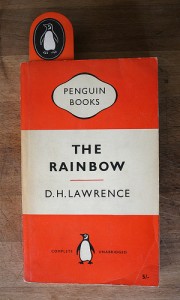
Lawrence's "The Rainbow" was first published in 1915 but banned unti 1926. Joyce published Ulysses in 1922 and it was also banned in Britain for 11 years. 11 years seems to have been the time it took for respectable society to accept these books.
Ursula in “The Rainbow” was confronted with a similar situation. 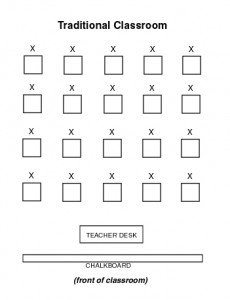
Lawrence captures beautifully that feeling when we go into a classroom full of enthusiasm and wanting to try out new ideas and are confronted with the stark realities of the classroom. How we manage ourselves in this initial period of our teaching is often an indication of how we are going to cope with the complexity of classroom life and whether we are in for the long haul and are going to survive classroom life at all.
The arrangement of classroom furniture is a key variable in teaching, reflecting approaches and philosophies of teaching and while worldwide most children and students sit in rows, it is no coincidence that the 1967 Plowden report marked a major shift in primary schools in Britain to sitting round tables. A thought-provoking challenge to Plowden can be found here and,contextualised within English Language Teaching, the message seems to be to pay attention to what the appropriate seating arrangements might be for specific tasks we set.
Whatever the reality my teacher trainees are faced with when they enter schools for the first time as a beginner teacher, I still encourage them to explore the possibilites of arranging the classroom furniture more effectively, albeit within the existing constraints, and to make discussions about this part of the content of in class language learning with the students they teach English to.
Ursula’s first experience of a classroom in “The Rainbow”
“There was a small high teacher’s desk facing a squadron of long benches, two high windows in the wall opposite.It was fascinating and horrible to Ursula.
The curious,unliving light in the room changed her character. She thought it was the rainy morning. Then she looked up again, because of the horrid feeling of being shut in a rigid, inflexible air, away from all feeling of the ordinary day; and she noticed that the windows were of ribbed, suffused glass.
The prison was round her now! She looked at …the long rows of desks, arranged in a squadron, and dread filled her.
This was a new world, a new life, with which she was threatened. But still excited, she climbed into her chair at her teacher’s desk. It was high, and her feet could not reach the ground, but must rest on the step. Lifted up there, off the ground, she was in office. How queer, how queer it all was!
She was here in this hard, stark reality…
This prison of a school was reality. Here, then, she would sit in state, the queen of scholars! Here she would realize her dream of being the beloved teacher bringing light and joy to her children!
But the desks before her had an abstract angularity that bruised her sentiment and made her shrink. She winced, feeling she had been a fool in her anticipations. She had brought her feelings and her generosity to where neither generosity nor emotion were wanted. And already she felt rebuffed, troubled by the new atmosphere, out of place.”
David Herbert Lawrence as a beginner teacher
Lawrence had no illusions about teaching or classrooms, he experienced both the visionary idealism of our profession and its more sobering realities. From the archives we can conclude, I think, that he was a good teacher, although in his first year’s teaching he himself admits that he had to “fight bitterly for my (his) authority” but his headmaster, George Holderness, a head of more than one school, was full of praise for his work:
“He served his apprenticeship with me and in every respect gave thorough satisfaction. He is hardworking and painstaking, energetic and bright in his manner, and at the same time kind and considerate for others. I have been in charge of these schools for 28 years and during that period have had many teachers, but in my opinion none of greater promise than Mr Lawrence. I can confidently recommend him as an exceptionally efficient teacher”.
Later on in Davidson Road School, Croydon, London he became well-known in the school for employing drama techniques in the teaching of Shakespeare, long before drama had become a feature in the English curriculum.
“He encouraged the boys to act out ‘The Tempest’, rather than sitting at their desks reading it.”
Like Joyce, Lawrence, the son of a Nottinghamshire miner, is better known for his literary contribution to the world than his role as a teacher but in preparing teachers to teach and working with teachers who already teach, I have found looking at the teaching side of his life a rich vein to excavate, and one to remember today along with all his other humanistic work we are well familiar with.
He died of tuberculosis in Vence, France at the terribly young age of 44.
“Be still when you have nothing to say; when genuine passion moves you, say what you’ve got to say, and say it hot”
D.H.Lawrence born 11th September 1885, died March 2nd 1930

